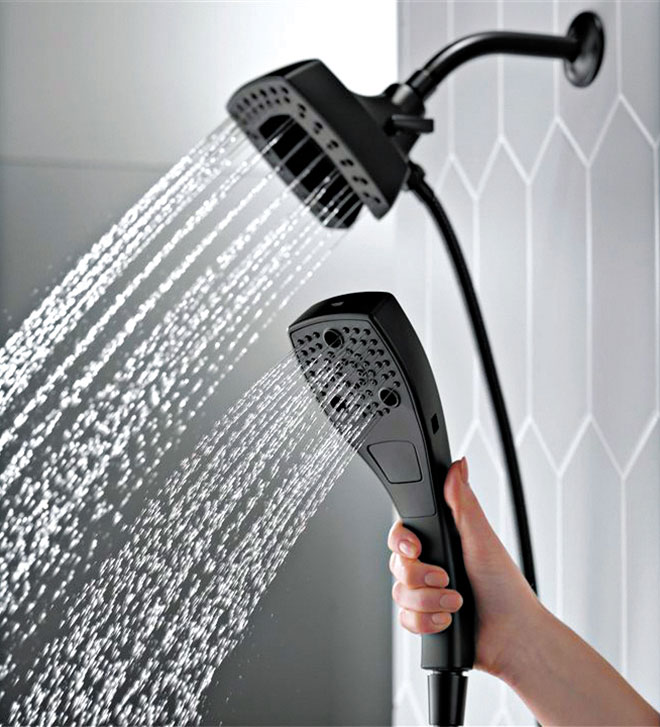Most recent data shows that in the past five years, 85% of people have shifted their behavior to be more eco-conscious and have started thinking sustainably when making purchases. For many, the home is a natural place to start incorporating environmentally friendly products and practices.
“From utilizing green building products to incorporating high-efficiency technology, implementing more eco-friendly practices and products at home is a steppingstone towards living a more sustainable lifestyle,” says Judd Larned, president of Culligan Water. “Start with your water. Making eco-friendly choices on how you consume and treat your home’s water can have a big impact.”
Drinking water from your home tap is a great way to help the environment. Every year, overuse of single-use plastic bottles contributes to pollution, yet many people prefer the taste and quality of bottled water over the tap water in their home. By installing a water treatment solution, such as a reverse osmosis system, homeowners can get cleaner, filtered water directly from the tap and reduce their use of single-serve bottled water. The Culligan Aquasential® Smart Reverse Osmosis Drinking Water System offers 12 different filter options and is certified for the reduction of 59 contaminants, which include 15 emerging contaminants including lead, arsenic, pharmaceuticals, volatile organic compounds and PFOA/ PFOS.
For a greener solution to traditional water softening, a high-efficiency water softener, like the Aquasential Smart High Efficiency Water Softener, is designed to minimize water and salt usage while effectively softening the water. By selecting a high-efficiency softener, you can reduce water and salt usage. Both the RO and softener also offer a smart device app
that gives users intuitive control over each system with water alerts, maintenance needs and tools that track water usage and consumption at your fingertips. You’ll have real-time data to help manage water usage in your home.
Going beyond your water, here are additional tips for creating a more environmentally friendly home:
CHOOSE GREEN DÉCOR
A simple way to go green with your home is to choose environmentally friendly décor. While natural stones and marbles are on trend, their use is costly to the environment. Instead, homeowners can use man-made materials that mimic the look of natural materials. Using composite materials made from recycled content or natural materials that are sustainably sourced for décor, cabinets, fixtures and countertops is a great way to get the latest trends in home décor without negatively impacting the environment.
ENERGY-EFFICIENT APPLIANCES
When purchasing new appliances, opt for those with high energy-efficiency ratings. Energy-efficient appliances are designed to accomplish the same tasks with less power, which reduces the need for additional power plants and decreases the extraction of natural resources such as coal, natural gas and oil. By conserving these resources, we can preserve ecosystems, protect habitats and minimize the environmental damage caused by their extraction. On appliances such as refrigerators, dishwashers and laundry machines, look for ENERGY STAR certified products, which meet strict energy-saving standards.
USE SMART TECHNOLOGY
Today, smart home technology is available to help homeowners control and track their energy usage, resulting in improved conservation as well as lower utility bills on the home front. Smart thermostats and lighting, as well as home automation systems, allow you to optimize heating and cooling or create energy-saving routines and schedules whether you’re home or away. Use energy monitoring systems to track usage patterns, identify energy-hungry appliances and provide insights on how to optimize energy efficiency.
RECYCLE
Recycling is one of the most simple and well-known ways to go green at home as it conserves resources, reduces landfill waste and minimizes the environmental impact of manufacturing new products. Set up a recycling system in your home to separate recyclable materials from general waste. Identify local recycling centers or programs that accept different types of recyclables and ensure proper disposal. Consider going beyond traditional efforts by buying products made from recycled material or from companies dedicated to sustainability.
By implementing these tips, homeowners can contribute to a more sustainable future while creating a healthier and more cost-effective living environment. For more information on in-home water treatment solutions, visit culligan.com.
This article is courtesy of Brandpoint.
